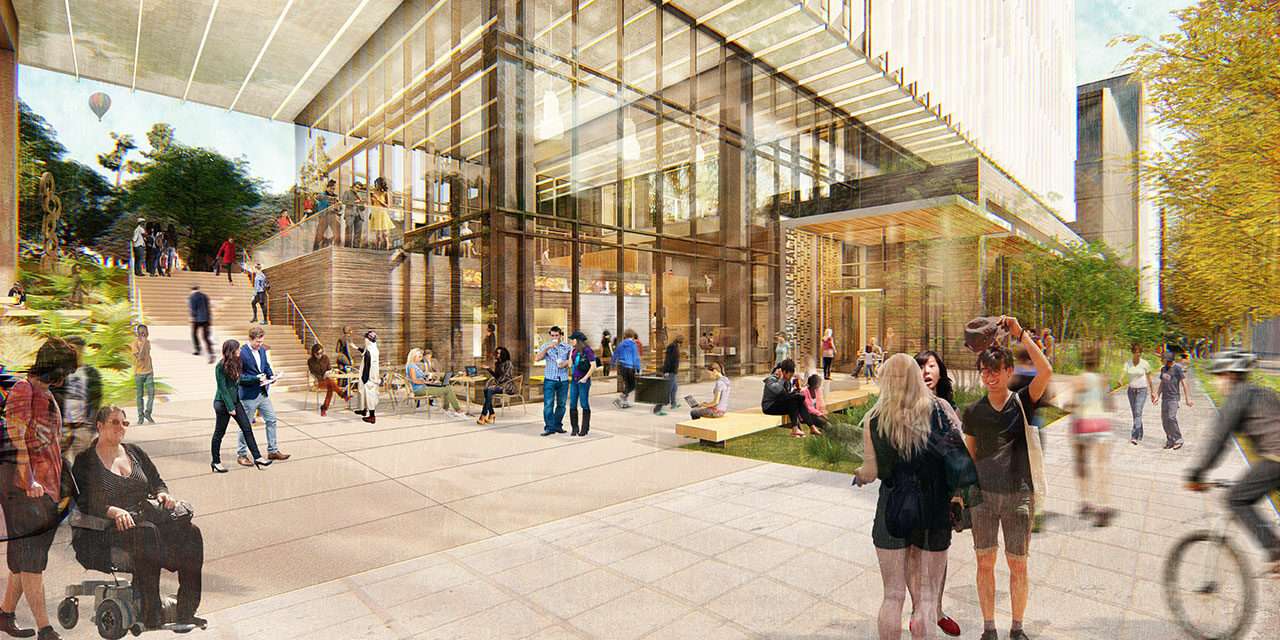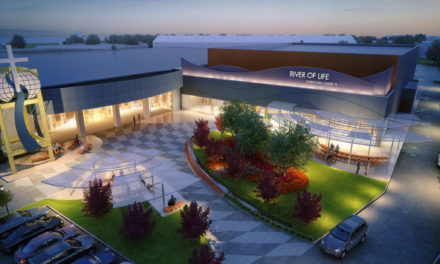“The building and the project as a whole has come to reflect, in a small way, the Population Health Initiative,” notes Sian Roberts, FAIA, corporate executive for the project and partner at Miller Hull. “Together with a wide range of client and user groups, we are imagining how space can support such a complex and inspirational mission.”
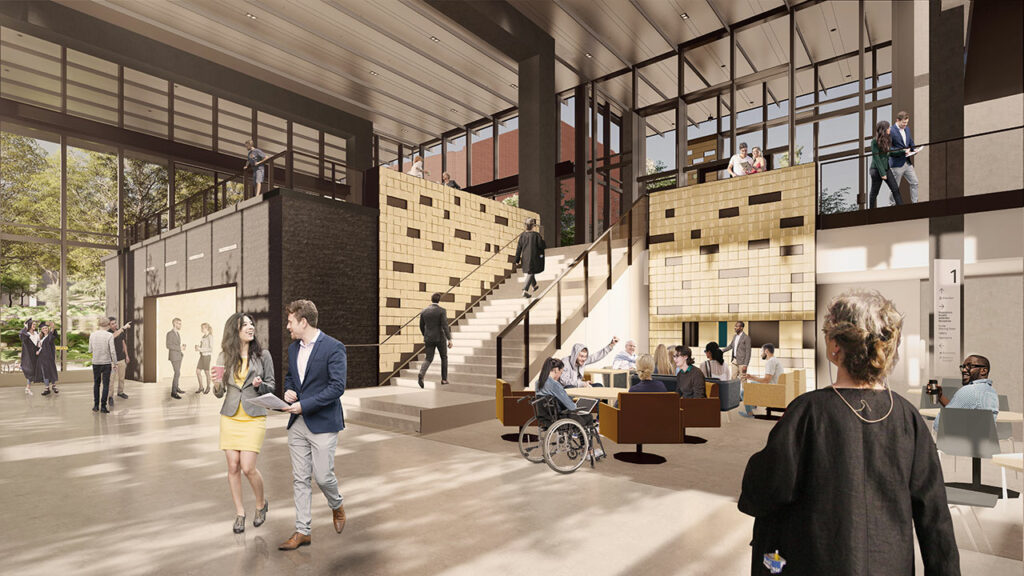
The lobby at the Population Health Facility. Courtesy of The Miller Hull Partnership
Like the programs it houses, the building is designed to engage the world at large, from local to global. Physically and metaphorically porous, the building will provide a welcoming environment for its users and the campus. Tucked into a sloping site along 15th Avenue Northeast—the western edge of the University of Washington’s central campus—the building will open to the neighborhood and the university via entry points on each façade. A multi-story, street-level foyer wrapped in glass will adjoin an open terraced passageway that works its way through the building, further integrating it with campus circulation.
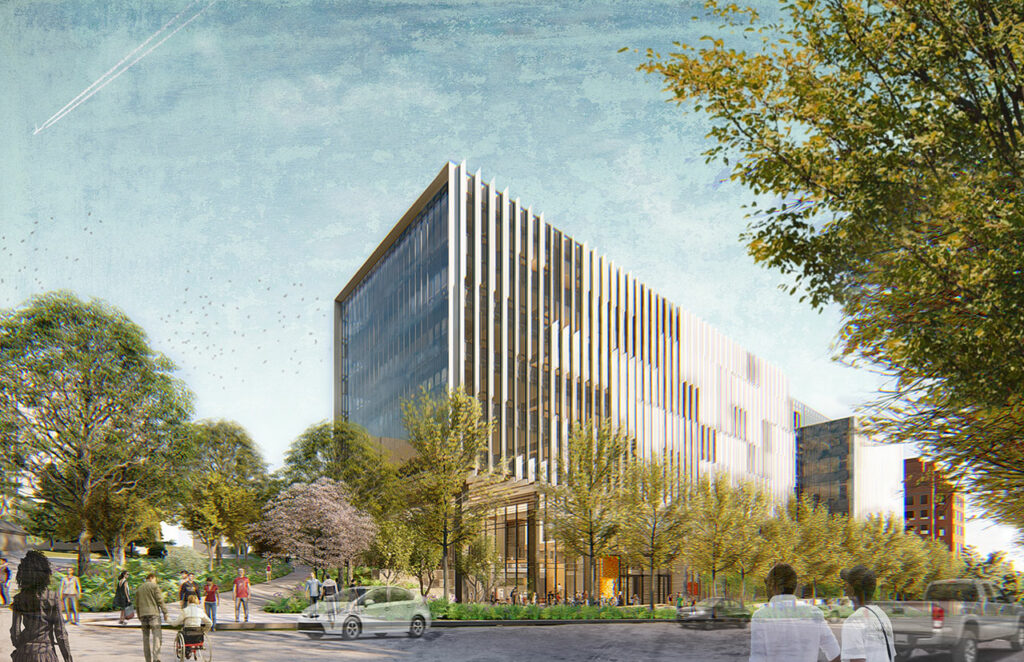
Northwest corner. Courtesy of The Miller Hull Partnership
“The building both defines and responds to its context,” notes Ruth Baleiko, FAIA, design lead for the project and partner at Miller Hull. “We looked for ways to build upon the physical and social structures of the site and leverage those elements in conjunction with environmental conditions to create a building that is, as much as possible, ‘of its place.’”
Inside, spaces are conceived as a laboratory for ideas and to encourage collaboration. A series of large, multi-story reception areas will serve double duty as informal meeting and campus drop-in spaces.
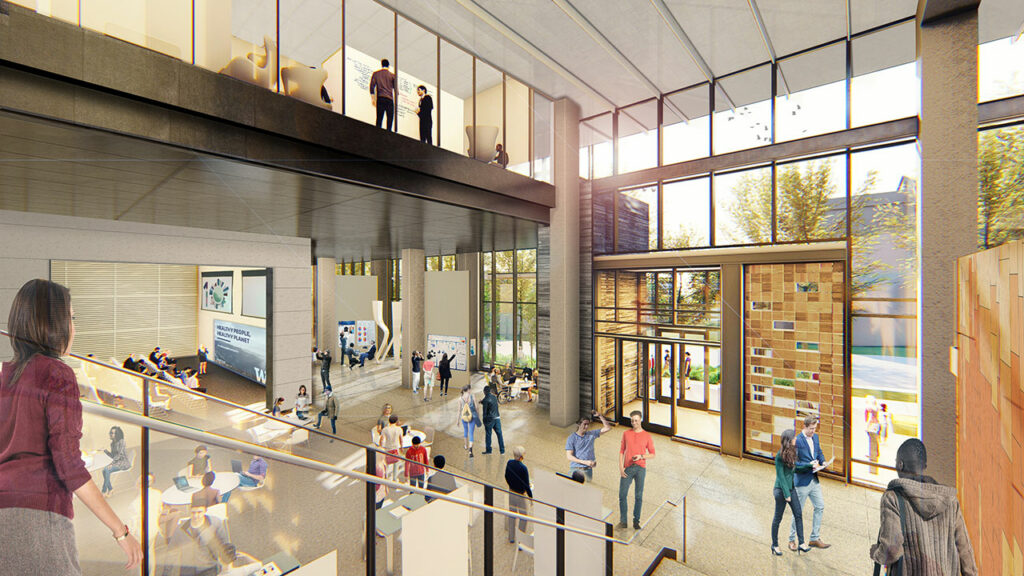
Courtesy of The Miller Hull Partnership
Floors three through eight will be dedicated to research, with a variety of office types that include open work stations, group work areas, conference spaces, instructional spaces and computer labs—all derived from a set of four activity-based, scaleable modules. Reflecting changes in headcount and activity, the modules are designed to morph in size and function with furnishings helping to define each space.
Research floors will eschew typical corridors and employ periodically spaced open nodes where tenants can come together for interdisciplinary collaboration.
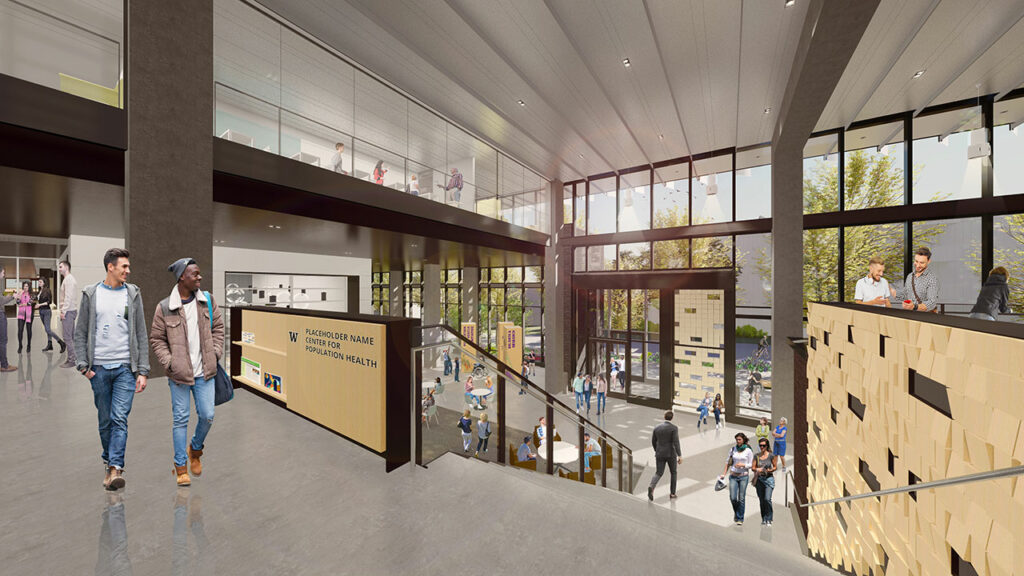
Courtesy of The Miller Hull Partnership
The expressive west side of the building will be composed of 3-foot-deep vertical glass fins to create a dynamic façade facing the university’s future innovation district. The fins will vary in overall length to modulate the massing of the concrete-framed building, while also minimizing heat gain and glare and maximizing lighting and views.

Grant Lane looking west. Courtesy of The Miller Hull Partnership
The north and south ends of the building highlight user collaboration, offering framed, unobstructed glimpses into the interior.
The east side of the building will feature subtle, 8-inch-deep aluminum fins, providing continuity with the west side of the building while appropriately responding to its specific environmental conditions and solar load. Stacked basalt will wrap the building’s lower level. Circulation towers will be constructed using precast concrete panels. LEED Gold certification is targeted.

Gardenwalk looking north. Courtesy of The Miller Hull Partnership
Led by design-build collaborators Miller Hull and Lease Crutcher Lewis, the project is being developed using an Integrated Design-Build (IDB) delivery method, a process that encourages teams to embrace elements of Integrated Project Delivery as well as Lean Design and Construction—techniques developed to create efficiency while maximizing value and minimizing waste.
The Bill & Melinda Gates Foundation is providing $210 million in funding for the project, which is being developed by the University of Washington. Construction completion is targeted for 2020.
Project Team
The Miller Hull Partnership (architecture and interior design)
Lease Crutcher Lewis (contractor)
University of Washington (client/owner)
SiteWorkshop (landscape architects)
KPFF (civil and structural engineering)
AEI VECA (electrical engineering)
VECA (electrical subcontractor)
Blanca Lighting Design (lighting design)
PAE (mechanical engineering)
Hermanson Company, LLP (mechanical subcontractor)
A3 Acoustics (acoustical consultant)
Mayer Reed (environmental graphics)
Lisa Freiman (art curator)

